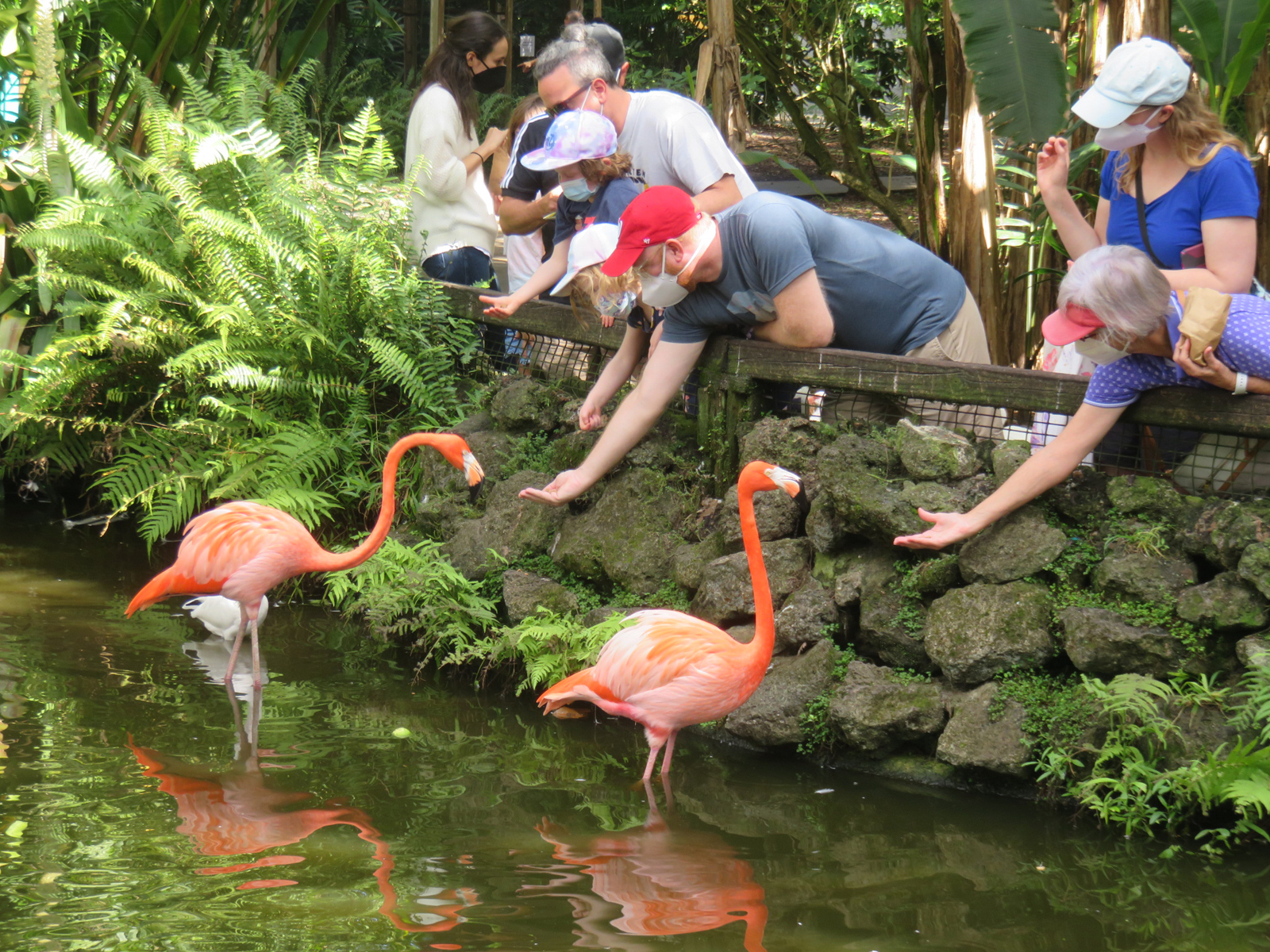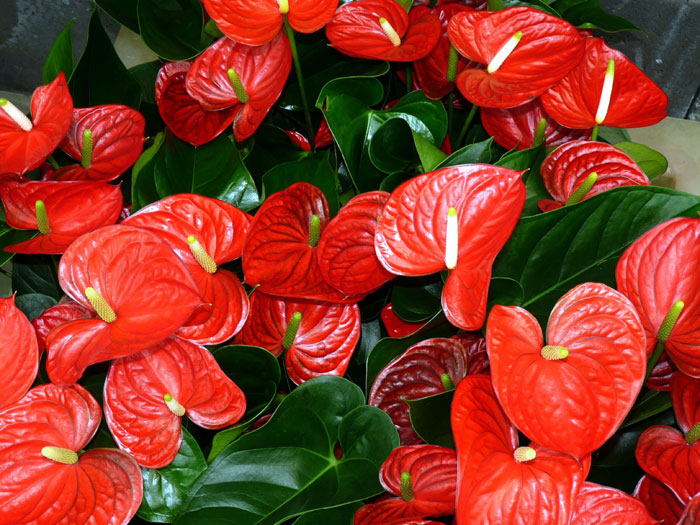Flamingo Bushes: The Stunning Plant That Will Add Color To Your Garden
Introduction
Flamingo bushes are a type of deciduous shrub that is known for its stunning pink and white foliage. They are native to China and Japan, but they are now grown in gardens all over the world. Flamingo bushes are relatively easy to care for and they can add a touch of elegance to any garden.
Main Content
- What is a flamingo bush?
A flamingo bush is a deciduous shrub that is typically 6-8 feet tall and 4-6 feet wide. It has long, slender branches that are covered in small, oval leaves. The leaves are a striking combination of pink, white, and green. In the spring, the leaves emerge a brilliant pink color. As the summer progresses, the pink fades to white and green. In the fall, the leaves turn a beautiful shade of yellow.
- How to care for a flamingo bush
Flamingo bushes are relatively easy to care for. They prefer full sun, but they can tolerate partial shade. They need well-drained soil and regular watering. Flamingo bushes are not very drought-tolerant, so it is important to water them deeply during dry periods.
- Where to plant a flamingo bush
Flamingo bushes can be planted in a variety of locations. They are a good choice for borders, hedges, or specimen plantings. They can also be planted in containers.
Flamingo bush care tips
Fertilize your flamingo bush in the spring with a balanced fertilizer.
Prune your flamingo bush in the spring to remove dead or damaged branches.
Protect your flamingo bush from frost in the winter.
Conclusion
Flamingo bushes are a stunning plant that can add a touch of elegance to any garden. They are relatively easy to care for and they can thrive in a variety of conditions. If you are looking for a colorful and easy-care shrub, then a flamingo bush is a great option.
The flamingo bush is a beautiful and unique plant that is native to South Africa. It is known for its bright pink flowers, which resemble the feathers of a flamingo. The flamingo bush is a popular ornamental plant, and it can be grown in USDA hardiness zones 9-11.
If you are interested in learning more about the flamingo bush, please visit Garden Wiki. This website provides detailed information about the plant's care, propagation, and uses.
FAQ of flamingo bush
Q: What is a flamingo bush?
A: A flamingo bush is a tropical plant native to South America. It is known for its bright orange flowers, which bloom in the spring and summer. Flamingo bushes can grow up to 10 feet tall and 6 feet wide. They are relatively easy to care for and make a beautiful addition to any garden.
Q: How do I care for a flamingo bush?
A: Flamingo bushes prefer full sun and well-drained soil. They should be watered regularly, but not too much. Flamingo bushes are relatively drought-tolerant, but they will not do well in wet, soggy soil.
Q: Do flamingo bushes lose their leaves?
A: Yes, flamingo bushes lose their leaves in the fall. The leaves turn yellow and then drop off. The plant will then go dormant until the spring, when it will start to grow new leaves.
Q: How can I propagate a flamingo bush?
A: Flamingo bushes can be propagated by seed or by cuttings. To propagate by seed, sow the seeds in a well-drained potting mix. The seeds will germinate in 2-4 weeks. To propagate by cuttings, take a 6-8 inch cutting from a healthy plant. Dip the cutting in rooting hormone and plant it in a well-drained potting mix. The cutting will root in 4-6 weeks.
Q: What are some common problems with flamingo bushes?
A: Some common problems with flamingo bushes include:
- Leaf spot: This is a fungal disease that causes brown spots on the leaves. To treat leaf spot, remove the affected leaves and apply a fungicide.
- Mealybugs: These are small, white insects that suck the sap from the leaves. To treat mealybugs, wash the leaves with insecticidal soap or neem oil.
- Aphids: These are small, green insects that also suck the sap from the leaves. To treat aphids, spray the leaves with insecticidal soap or neem oil.
Q: How can I prevent problems with my flamingo bush?
A: To prevent problems with your flamingo bush, you can:
- Water it regularly, but not too much.
- Fertilize it once a month during the spring and summer.
- Plant it in a location that gets full sun.
- Inspect the plant regularly for signs of pests or diseases.
Image of flamingo bush
- Image 1: A close-up of a flamingo bush in full bloom. The leaves are a beautiful marbled combination of green, white, and pink.

- Image 2: A full-size flamingo bush in a garden. The bush is about 6 feet tall and has a wide, spreading canopy.

- Image 3: A flamingo bush in fall. The leaves have turned a brilliant shade of orange.

- Image 4: A flamingo bush in winter. The leaves have fallen off, but the bare branches are still quite attractive.

- Image 5: A flamingo bush in a pot. This is a great way to grow a flamingo bush if you don't have a lot of space.

- Image 6: A flamingo bush in a hedge. Flamingo bushes can be trimmed to form a hedge.

- Image 7: A flamingo bush in a bouquet. Flamingo bushes make beautiful cut flowers.

- Image 8: A flamingo bush in a landscape design. Flamingo bushes can be used to add color and interest to a landscape design.

- Image 9: A flamingo bush in a wildlife garden. Flamingo bushes attract butterflies and other pollinators.

- Image 10: A flamingo bush in a container garden. Flamingo bushes can be grown in containers, but they will need to be repotted every few years.

Post a Comment for "Flamingo Bushes: The Stunning Plant That Will Add Color To Your Garden"